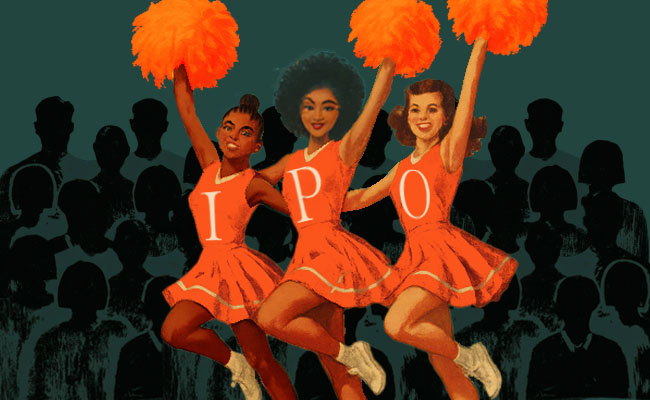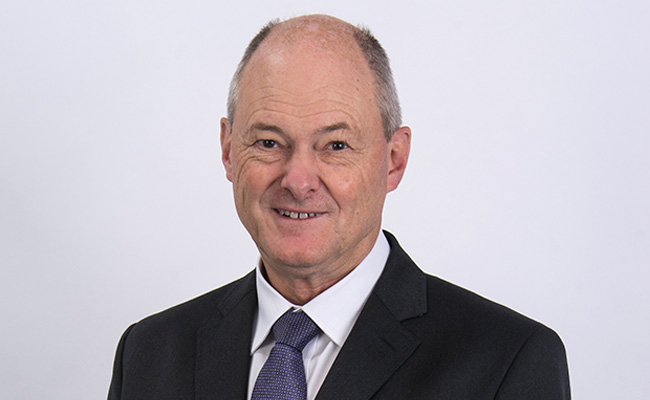Jurie Strydom is only five months into the job of CEO of South Africa’s largest insurer, but has already inked his first major deal: the R1.87bn purchase of investment index provider 10X.
Strydom, speaking after Old Mutual’s capital markets day in Cape Town, says the acquisition will strengthen the insurer’s proposition at a propitious time, as he looks to breathe new life into the aristocratic 180-year-old company.
“It’s a big step forward for us,” he tells Currency. “If you dig into the areas that really matter for growth — like passive investments and exchange traded funds (ETFs) — we’ve been too light, especially on our direct and digital business.”
Old Mutual’s private equity business originally had a stake in 10X, but the opportunity to buy 85% of a company valued at R2.2bn presented itself almost as soon as Strydom walked through the door in June. “We put this transaction through quite a high strategic hurdle because we’re committed to capital discipline, but this ticked all the boxes,” he says.
In the bigger scale of Old Mutual’s business, it might seem like 10X, which only has R68bn under management, is small beer.
After all, across its sprawling empire, Old Mutual manages R1.2-trillion in funds, from the R212bn at fixed-income provider Futuregrowth, R290bn in its fundamental equity business, and R123bn in its private equity business. Not to mention that it has the largest market share at the lower-end, including through funeral policies, and in the corporate sector.
But, Strydom says, this acquisition is a calculated bet on the steep growth in exchange traded funds (ETFs), which may only be worth around R368bn today, but which are expected to soar by 17% per year until 2034, ultimately reaching R1.84-trillion. “South Africa’s passive market is in its early stages. The market is under-penetrated, leaving scope for growth,” the company said.
Also, while it is true that 10X only accounts for about a fifth of South Africa’s passive investment market, it has been capturing 35% of inflows into index funds since 2022. In other words, it is on the up and brings in more than 60,000 customers.
This deal might have hogged the headlines from Strydom’s high-octane three-hour presentation to investors and the media, but it was far from the only eyebrow-raising recalibration of a machine which has felt distinctly in need of a tune-up in recent years.
For one thing, he has ramped up Old Mutual’s ambitions. Strydom outlined a series of new targets, including a return on net assets of between 15% and 17%. The insurance underwriting margin has been raised to 5%-8%, and it aims to grow its dividend per share by 6%-9 % per year. Oh, and at the same time, Old Mutual aims to shave off R2.5bn in costs across the business.
Those aren’t small goals. But there is a tangible sense – with a new energy rippling through the sprawling mall that makes up its Pinelands head office – that this might just be possible.
Strydom says his first five months have been about rebuilding confidence in a company that, despite having the largest market share in insurance, has often seemed too scared to use this bully pulpit.
“Look, I was on the board for 18-months, before I took this role, so I had a sense of what we needed to do. But Old Mutual’s profile has surprised me a bit: it’s a company with a R65bn market capitalisation, but if you look at the number of people who work across our 10 countries, our brand reach, and our customer base, we’re everywhere. Those are big shoes, and we can fill them better,” he says.
‘Speed of execution’
You can see why shareholders have warmed to him, reflected in an immediate 1.8% bump to its share price after Tuesday’s presentation. This continues a gratifying trend: since Strydom took the reins, the stock is up 21%.
Growth is clearly back on Old Mutual’s agenda, after a listless decade in which it shifted its headquarters back to the Cape from London, ditched its stake in Nedbank and slimmed down. It wasn’t a disaster — but it could have been better. Over the past five years, for instance, Old Mutual’s stock has risen 41%, which doesn’t sound awful, until you consider that this was from a Covid low. Consider, too, that over that time, shares in its perennial rival, Sanlam, are up 88%, Discovery has gained 95%, and Momentum is up an even more stratospheric 150%.
So, while Old Mutual might not exactly have been eyeing retirement until Strydom arrived, there was a sense, at times, that it was content to settle for a smaller slice of a smaller market.
No longer, it seems. The new energy was evident in the bustling presentations by Strydom, the head of its new bank, Clarence Nethengwe, the chief operating officer, Zureida Ebrahim, and the head of Old Mutual Life, Prabashini Moodley.
Asked to define what has changed, Strydom says the speed of execution has been critical to the revival.
“The ability of people to feel like things are getting done, and to make decisions, is a real thing. It builds confidence to say, ‘guys, we can do this — we can not only build a bank, we can sign up new customers too’,” he says.
The bank is a major part of the new strategy, even if it predates Strydom’s tenure. Launched in March, it now has nearly 150,000 customers and is signing up 5,000 new ones every day.
This is some riposte to the critics who were baffled by Old Mutual’s decision to launch another bank (it tried, and failed, to do this about 15-years ago) into a market thronging with formidable competitors like Capitec, not to mention new(ish) upstarts like Discovery and TymeBank.
“We are adding customers at scale,” said Clarence Nethengwe, the head of the new bank, adding that “you can’t win against the big boys unless you’re absolutely obsessed”.
Nethengwe said the bank began with a huge advantage, since there was an existing R15.5bn loan book within Old Mutual, so it was natural to convert them into bank customers. For growth, the bank is targeting the 7-million customers within the wider Old Mutual group, as well as the R42.6bn in aggregated profit at South Africa’s “big five” banks — Standard Bank, Capitec, Nedbank, Absa and First National Bank.
It all folds rather neatly into Strydom’s new strategy, which he describes as “re-establishing” its presence in markets it dominates — like insurance, of which it has an 8.7% share — and asserting its “right to win”.
“We are going about it differently to how we’re done it before,” he says. But he concedes that “for investors, the proof will be in the delivery”.
So far, the signs are auspicious. Old Mutual might have a long road to go, but it is clearly back in the game.
Top image: Rawpixel/ Currency collage
Sign up to Currency’s weekly newsletters to receive your own bulletin of weekday news and weekend treats. Register here.













